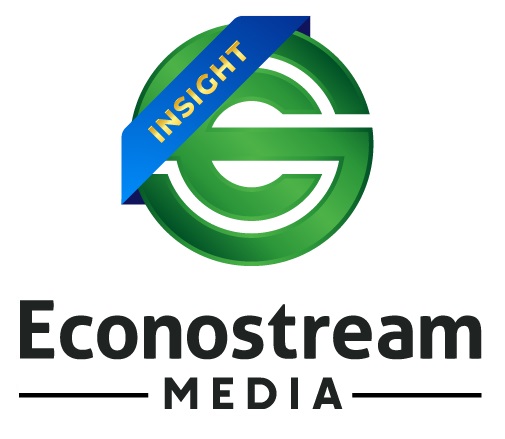ECB Insight: Lagarde’s Strategic Ambiguity Continues — And So Might the Pause
24 July 2025

By David Barwick – FRANKFURT (Econostream) – European Central Bank President Christine Lagarde struck a somewhat hawkish tone on Thursday, pointing to better-than-expected economic data, dismissing fears of undershooting, and repeatedly declining to encourage expectations of further easing.
Of course, she did not slam shut any doors, either. That was never going to happen and would have been completely at odds with the data-dependent, meeting-by-meeting approach that she yet again invoked.
The baseline of the June 5 macroeconomic projections ‘is generally confirmed by all the recent data that we have received’, Lagarde said early. The Council was relying on this baseline ‘for the moment’, she said.
Still, it emerged that the ECB now appears to hold a slightly more positive view of the economy. Consider 5 June, when final numbers for euro area Q1 GDP growth were not yet available and Lagarde predicted an upward revision that would be ‘attributable to multiple factors’ including consumption and investment, but would ‘more importantly’ reflect simple anticipation of tariffs.
Today, in contrast, she downplayed the contribution of such frontloading to the significantly better final Q1 outcome and instead highlighted the roles of consumption and investment. ‘So, growth is developing mostly, if not a little better than in line with our expectations’, she said.
For us, it is hard to overlook the parallel here with Executive Board member Isabel Schnabel in Econostream’s recent interview, in which she similarly downplayed frontloading and was bullish on economic developments.
Undershooting seemed virtually a non-issue from Lagarde’s perspective. To be sure, next year would bring below-target inflation ‘for all sorts of base effects reasons’, she allowed, ‘but … we are not going to be moved away by some minor deviation, and we are looking at the medium-term targets that we have.’
There would inevitably be ‘two or three governors’ fearful of undershooting, she said somewhat dismissively, but the medium-term orientation was king and expectations were ‘strongly anchored around 2%, in the short term, but also in the longer term.’ And that was that, she essentially said.
As for tariffs, Lagarde had little light to shed on potential implications for the further course of monetary policy. ‘[I]t’s a very complicated set of factors that we will have to analyse, take into account to determine what the impact will be’, she said, declining to venture into the ECB’s possible response to hypothetical scenarios.
Still, to the extent that she offered some higher-order details about how tariffs and their ramifications could impact inflation, the accent was probably on higher price pressures.
Given such uncertainty about the outcome of trade tensions, the ECB was ‘in this wait-and-watch situation’, she said. The jury was still out regarding ‘how quickly the uncertainty will be cleared’, she said.
But at no point did she suggest even implicitly that the ECB was on hold in the sense of waiting to ease further with only the timing unclear. Rather, the question of whether such a move would come at all seemed genuinely open.
True, asked to agree with Schnabel’s comment two weeks ago to Econostream that ‘the bar for another rate cut is very high’, Lagarde balked. It is important to see her reluctance in context, of course, and while we cannot be sure what she was thinking, what came through suggests to us that she would have been equally unwilling to confirm the comment if it had been that the bar for another rate cut was not very high.
Her understanding of her job, she said, was that she had ‘to harness all the views of the Governing Council members’ and ‘elicit as large a majority view as is possible.’ It was ‘widely shared’ that decisions would be made meeting by meeting on the basis of available information, she said.
Anyone pinning rate hope cuts on the euro’s strength got nothing concrete from her. As we anticipated in this space on Tuesday, Lagarde was asked about ECB Vice President Luis de Guindos’ recent assertion that a euro above $1.20 meant trouble, but was conspicuously unwilling to echo him.
On the contrary, she had a quote at the ready of de Guindos noting innocuously that the exchange rate was part of the inflation outlook, a comment any Council member could have made. ‘We are exactly on the same page in terms of our message regarding exchange rate’, she said with an amused look.
Offered a final chance by Econostream at the conclusion of the press conference to give those expecting another 25bp cut something to hold on to, Lagarde stuck to her guns and gently insisted on the futility of predictions.
‘Markets do what they have to do, and we do what we have to do’, she said. ‘We are in a good place, we are well positioned to deal with turbulent waters and to deal with the risks that will develop over the course of the next few months.’
The disinflationary cycle had been ‘essentially closed’ via 200bp of easing, she said. New projections would lead to a new assessment at every meeting and allow a policy decision, she said. There could be no ‘pre-determined rate path’, she said.
Lagarde’s tone may not preclude further easing, but it certainly did not endorse it either, and on balance may have marginally retreated from being consistent with it.
In a nutshell, we can safely reiterate what we said here on Tuesday, namely that the July pause seems slightly more likely to extend to 11 September than not. That is, we by no means rule out another 25bp cut in seven weeks, and don’t even consider the probability terribly low. We simply consider it a bit lower than that of a pause.
